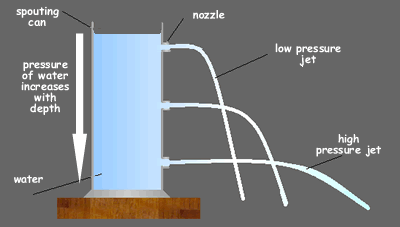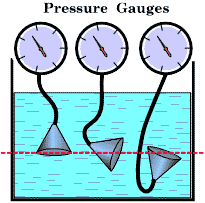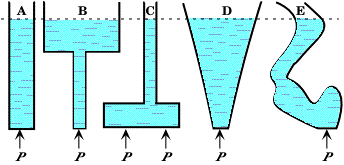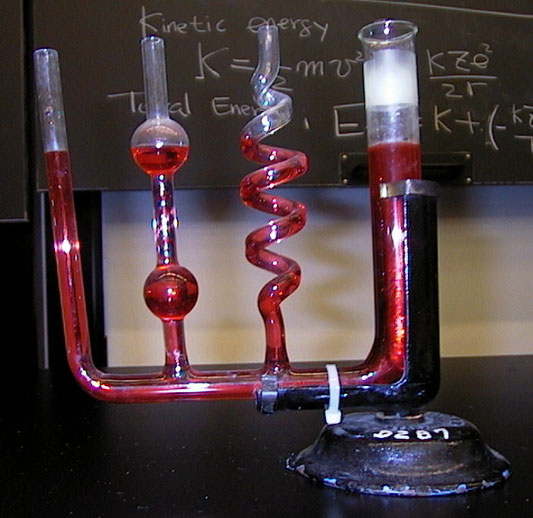
The spouting can shows that pressure increases with depth.
It consists of a tube with three separate nozzles in its side and an open surface on top. The three nozzles are blocked, then the tube is filled with water. When it is completely full, the holes are unblocked. The water is under more pressure the further down the tube it is. This is shown by the fact that the water jets travel a larger distance the lower the nozzle.
|

The pressure at a given depth within a liquid is due to the weight of the liquid acting on a unit area at that depth plus any pressure acting on the surface of the liquid (atmospheric pressure). The pressure due to the liquid alone at a particular depth depends only upon the density of the liquid  and the distance that point is below the surface of the liquid - h. It is therefore proportional to the depth and the distance that point is below the surface of the liquid - h. It is therefore proportional to the depth |

The pressure at a given depth is independent of direction -- it is the same in all directions. In this diagram we see the guages read the same because the pressure is being measured at the same depth (red line). |
 The pressure at a given depth does not depend upon the shape of the vessel containing the liquid or the amount of liquid in the vessel. It only depends on the depth. In the diagram on the left, the pressure P is the same even though the containers have different amounts of liquid in them, and are different shapes. The pressure at a given depth does not depend upon the shape of the vessel containing the liquid or the amount of liquid in the vessel. It only depends on the depth. In the diagram on the left, the pressure P is the same even though the containers have different amounts of liquid in them, and are different shapes. |

Pascal's Vases:
The height of the liquid in each of the 'arms' of the vase is the same - even though they hold different volumes of liquid. |